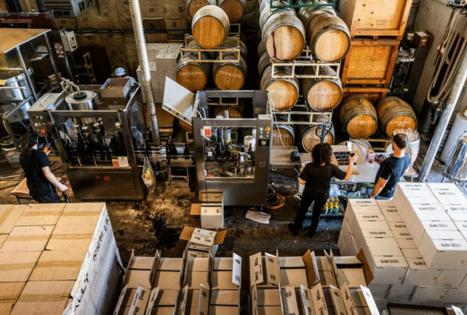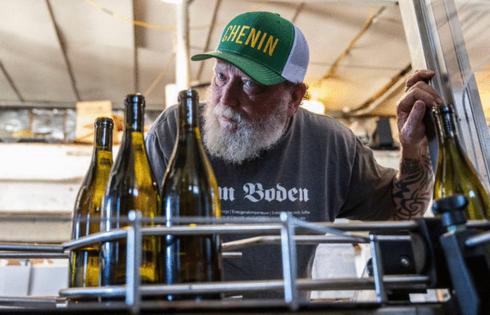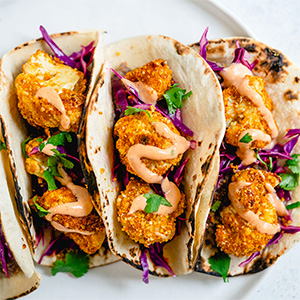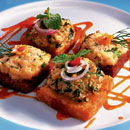This wine is making a comeback in California
Published in Variety Menu
SACRAMENTO, Calif. — Craig Haarmeyer can sum up chenin blanc, the varietal for which his West Sacramento winery is known, in just four words.
“Chardonnay without training wheels.”
The versatile, affordable white wine is enjoying a resurgence among California winemakers, as well as some tuned-in customers. That’s good news for farmers 20 minutes south of Sacramento in Clarksburg, where chenin blanc has been the keystone grape for decades.
Most Clarksburg wineries sell bottles of chenin blanc, including Julietta ($32), Heringer Estates ($25) and Rendez-Vous ($29). Yet it’s Haarmeyer, the owner and winemaker of Haarmeyer Wine Cellars, who has become Yolo County’s primary chenin-vangelist, producing what San Francisco Chronicle’s senior wine critic deemed “world-class wines from an underrated grape.”
Along with Lodi-based, Amador County-growing Tegan Passalaqua of Sandlands Vineyards, Haarmeyer will represent the region at Hella Chenin, an international festival celebrating the varietal May 3 in Berkeley. His wines have become en vogue, and in Vogue — the style magazine highlighted Haarmeyer Wine Cellars’ St. Rey En Foudre chenin blanc in a beginner’s guide to American wine published in March.
Winemakers and industry workers with trained palates have warmed to chenin blanc, Haarmeyer said. Some customers have, too: a Chronicle story published in December recounted how one Napa Valley winery made 30 cases of chenin, priced them at $75 per bottle and sold out within two minutes.
But in the Sacramento region, most drinkers still associate chenin blanc with its sweet, unimaginative predecessors. It’s time for that reputation to change, Haarmeyer said.
“It’s an uphill battle to break those preconceived notions about what these wines are supposed to be,” Haarmeyer said. “We’ve been leading the charge for 15 years now on chenin blanc, and I find that people in the industry just go gaga over it. But, generally speaking, consumers don’t really understand that.”
A noble grape’s decline
First cultivated in France’s Loire Valley, chenin blanc took off stateside around the time of California’s wine boom in the 1970s and ’80s. It accounted for 25% of all white wine grapes crushed in 1985, second only to its cousin Colombard, according to the state’s annual Grape Crush Report.
Clarksburg was in on chenin from the get-go. When Bogle Family Vineyards founder Warren Bogle planted the town’s first commercial wine grapes in 1968, half of the 20 acres were chenin blanc, and enough other growers followed suit that the Clarksburg AVA was established in 1984.
The terroir and Delta breeze lent themselves to whites such as chardonnay, now Bogle’s flagship offering, and certain reds including petite sirah. More than anything, though, it fed ripe chenin grapes to Napa and Sonoma wineries, which in turn produced off-dry wines.
Chenin’s versatility proved to be its downfall. It was the perfect grape to blend into bulk, mass-produced wine jugs and bags, usually labeled as California champagne or Chablis, and earned an according reputation. Even when bottled on its own in the 1980s, it was often picked late and sold in a long, slender bottle similar to riesling’s suggested sweetness, Ogilvie Merwin Vintners co-owner and director of production David Ogilvie said.
Ogilvie’s grandfather David Wilson planted his first grapes only a year after Bogle. Today, Ogilvie; his twin brother, Phil; and their longtime friend Tom Merwin own Clarksburg’s Ogilvie Merwin Vintners, the AVA’s biggest chenin producer. It supplies grapes for 24 California wineries, including sister business Silt Wine Co., and eight of the 26 represented at Hella Chenin.
Those early chenins pale in comparison to what’s being made today, Ogilvie said. Yet their ignominious reputation has persisted, and many drinkers, particularly older ones, turn their noses up.
“They’re really hung up on what chenin blanc used to be in the ’70s and ’80s,” Ogilvie said. “And I think it served its purpose back then. It met the needs of the consumer. But consumers aren’t drinking that way anymore.
“They want something crisp, light, refreshing (and) food-friendly, and yeah, chenin blanc fits the bill.”
Rebirth and resurgence
While riesling and ciognier enjoyed resurgences in the new millennium, chenin blanc became, as Wine Spectator once put it, “the 21st century’s great forgotten grape.” Loyalists in California, as well as South Africa and New Zealand, want to change that.
Traditionally grown in the Loire Valley’s cold, damp environment and alkaline limestone soils, chenin plays quite differently in the Sacramento-San Joaquin Delta. Clarksburg’s rich soils and high water table produce beefy vines that growers can manipulate. And while hot summer days give the grapes more tropical flavors, chilly nights trap some contrasting acidity under their skins.
“You can do a lot of different things with it,” Ogilvie said. “It’s a chameleon. There’s a lot of different expressions of chenin blanc.”
“I think the younger generation ... they don’t have a connection to, necessarily, to the ’70s, ’80s style chenin. So they’re finding it now as like this new thing. I think that’s why you see this, this kind of resurgence of the variety. I think younger people are saying, ‘Oh, look at this. I like this.’”
Haarmeyer opened his natural winery in 2009 as an exploration of Northern California terroirs through the lens of chenin blanc. It sources from eight vineyards (three in Clarksburg, two in Lodi and one each from Calaveras, Amador and El Dorado counties) and ages the grapes for equal amounts of time in the same vessels with the same treatments.
They can be lean and mean or round and soft, and handle oak well in every vintage. Each vineyard produces startlingly different wines detectable even by untrained palates. That’s more interesting to Haarmeyer than starting out with a desired taste and tweaking the wine until it’s there, he said.
“It’s less about the winemaker’s hand with us. It’s more about expressing the vineyard,” Haarmeyer said. “And so these wines can range from unctuous and tropical to bracingly acidic and minerality perceived on the palate.”
Who drinks this stuff?
The same people who enjoy pinot gris and sauvignon blanc tend to like chenin as well, said Selland Family Restaurants CEO Josh Nelson. Chardonnay drinkers can be fans, too, with a bit of open-mindedness — or skullduggery.
When Ogilvie was an undergraduate wine and viticulture student at UC Davis in the early 2000s, he would try to get people to drink chenin blanc from his family’s label, Wilson Vineyards. They would ask for a chardonnay instead, he said, so he would pour them the chenin anyway and smile inwardly at the inevitable compliments.
Decades later, Haarmeyer does the same thing.
“Frequently at tastings, people will ask for our chardonnay,” Haarmeyer said. “And I used to tell them a long story about how we don’t make chardonnay, but now more and more, I just don’t say a word and fill their glass with one of our richer cuvées. And many times the response is like, ‘Wow, this is a really great chardonnay.’”
The Kitchen, one of Sacramento’s two Michelin-starred restaurants, always includes a chenin blanc from Haarmeyer in the wine pairings to accompany its ever-evolving tasting menu. Haarmeyer’s chenin is the only wine to appear simultaneously at The Kitchen as well as sister restaurants Ella Dining Room & Bar, OBO’ Italian Table & Bar and Selland’s Market-Cafe, Nelson said — a testament to its versatility.
A good chenin can nicely accompany fish, vegetable or dishes with lots of spices, Nelson said. Chenin also has a lower price point than more popular varietals, which makes it an easy-to-order glass at Selland Family Restaurants’ more casual concepts and lets The Kitchen include more expensive wines elsewhere in its pairings.
“It drinks great on its own, but it certainly pairs really, really well,” Nelson said. “It’s not going to be too astringent or too citrusy or too oaky or too big and buttery, right? It’s kind of like that Goldilocks (wine).”
©2025 The Sacramento Bee. Visit at sacbee.com. Distributed by Tribune Content Agency, LLC.















Comments